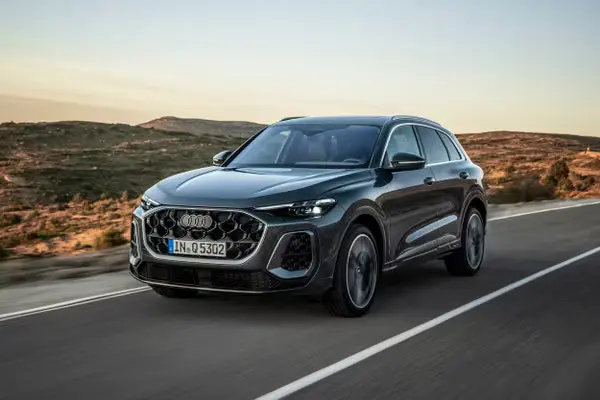BMW M62 Engine Guide
When you think of engines that BMW is known for, a number of straight-6s will likely come to mind first. With that stuff said, BMW has a rich history with engines of all shapes and sizes. While BMW has since shifted towards a lower-displacement turbocharged formula, well-padded German V8s have a strong presence in BMW’s engine itemize as well.
One of those trailblazing V8s is the BMW M62. As a refreshed and reworked version of the older M60 V8 which was in production from 1992 to 1996, the M62 engine made some notable changes to the older engine’s diamond which improved reliability and performance. Innovative changes to the engine block’s construction, hypereutectic pistons, and ferrous coated side skirts make the M62 a sturdy engine and a favorite in the BMW community.
The BMW M62 engine was the premier BMW V8 option in the late 90s to mid-2000s (outside of the S62) and was used in a wide range of vehicles, usually of the larger and increasingly luxurious variety. From the E39 5-Series to the E31 8-Series, the M62 was a lump that provided plenty of power in a linear way. The M62 plane found its way into other BMW-owned side projects, including the L322 Range Rover.

BMW M62 Engine Specs
Over the undertow of the M62’s 10-year lifespan, it was offered in 6 trims, each with slightly variegated characteristics. While the M62 came in four ostracism specs, some variants of the M62 were simply technically updated from the previous version.
Engine: BMW M62
Engine Configuration: 90-Degree V8
Displacement:
3.5L (3,498 cc) (M62B35 TU)
4.4L (4,398 cc) (M62B44 TU)
4.6L (4,619 cc) (M62B46 TU)
4.8L (4,837) (Alpina)
Aspiration: Naturally Aspirated
Valvetrain: DOHC, VANOS on TU versions
Block/Head: Aluminum/Aluminum
Bore x Stroke:
84mm x 78.9mm (M62B35 TU)
92mm x 82.7mm (M62B44 TU)
93mm x 85mm (M62B46/Alpina)
Weight: 308 lbs (Short Block)
Horsepower: 332 - 370
Torque: (lb-ft) 236 - 376
The M62 was first introduced in 1996 in M62B35 and M62B44 trims, with the former having a lower ostracism at 3.5L compared to the 4.4L M62B44 trim. Both the M62B35 and M62B44 received an updated version in 1998 and received a new engine designation. The updated versions are known as the M62TUB35 and M62TUB44 respectively. The updated versions retained the same ostracism and overall construction, but received a tumor in horsepower.
The M62B46 is an interesting engine, as it was never used in any factory BMW models. It was ripened by Alpina for use in the 1997 and 1998 Alpina B10. The engine’s construction was largely based on the M62B44, yet had an increased stroke and bore, raising overall ostracism to 4.6 liters. Like the other M62 variants, the M62B46 moreover received a technical update without a couple of years in production. However, unlike the other M62 variants, the M62TUB46 received some substantial parts upgrades.
In comparison to the M62B44, the M62TUB46 received metal VANOS hubs, higher lift intake and frazzle valves, stronger valve springs, and a two-piece oil scraper ring. While the standard M62B46 was not used in any factory BMW vehicles, the M62TUB46 was used in the E53 4.6is X5.
BMW M60 vs M62 Engine
In terms of their overall construction, the BMW M60 and M62 are very similar engines. The most firsthand difference, right out of the gate, is displacement. The M60 was offered in either 3.0L or 4.0L form as the M60B30 and M60B40. As we once covered, the M62 engine was offered in a variety of variegated sizes, with the most worldwide stuff the 4.4L M62B44. Beyond displacement, the engines did differ in a few notable ways, including woodcut material and intake manifold spritz characteristics.
One of the most significant differences between the two, besides displacement, is the diamond of the intake manifold. While neither the M60 nor M62 is truly zonkers up on the intake side of the engine, most BMW V8 enthusiasts stipulate that the older M60 has a better-designed intake manifold for high-rpm power production. The M60’s intake runners are longer and wider, which moves the torque lines remoter up the rev range at the sacrifice of some low-rpm torque.
There is a significant difference between M60 and later M62TU valvetrain configurations, as BMW introduced VANOS to the M62 engine in 1998. M62TUs are equipped with BMW single-VANOS, meaning that they have variable valve timing on the intake side only. The S62 is the only M62-derived V8 variant with dual-VANOS. It is important to note that early, non-technically updated M62s moreover lack VANOS entirely. Some BMW enthusiasts prefer the less ramified non-VANOS M60 and M62 engines, expressly due to the fact that they indulge some wiggle room for increasingly warlike cams. Since VANOS requires a specialized camshaft, there isn’t much upgrade potential for M62TUs.
Some other small differences include the transpiration from double-row timing villenage on the M60 to a single on the M62. There were moreover changes to the MAF design.
M60 Nikasil Issue
While the M60 and M62 both full-length aluminum construction for both the woodcut and the head, they moreover used some other, increasingly interesting, materials to line the cylinder bores. The M60 cylinders were coated with a “spray in” recipe tabbed Nikasil, which was meant to create a stronger and increasingly wear-resistant surface. Nikasil is a nickel-based recipe that integrates stat and silicon particles. While the material serves its purpose effectively, it can corrode when it comes in contact with gasoline with upper sulfur content. This corrosion could then lead to poor cylinder pinch and a number of spare performance-decreasing issues.
This issue was really only severe unbearable to rationalization snooping in the early 90s, when there weren’t strict regulations to mandate that sulfur content in gasoline was kept to a minimum. The issue was significant unbearable when in the day that BMW issued a recall for Nikasil-lined M60 engines to have the woodcut replaced with a new, Alusil-lined one. With that stuff said, it is wontedly terminated that if you own an M60-powered BMW with a Nikasil-coated woodcut and it is running strong today, you aren’t likely to overly have issues.
What Cars Use The M62 Engine?
With all of the BMW M62 engine variants rumored for, the V8 was used in 16 variegated models, plane reaching outside of the BMW namesake. Here are the vehicles that use the BMW M62 engine:
M62B35
- 1996–1998 BMW 5 Series (E39) 535i
- 1996–1998 BMW 7 Series (E38) 735i/735iL
M62TUB35
- 1999–2001 BMW 7 Series (E38) 735i/735iL
- 1998–2003 BMW 5 Series (E39) 535i
M62B44
- 1996–1998 BMW 5 Series (E39) 540i
- 1996–1998 BMW 7 Series (E38) 740i/740iL
- 1997–1999 BMW 8 Series (E31) 840Ci
M62TUB44
- 1998–2003 BMW 5 Series (E39) 540i
- 1999–2001 BMW 7 Series (E38) 740i/740iL
- 1999–2003 BMW X5 (E53) X5 4.4i
- 2000–2004 Morgan Aero 8
- 2002–2005 Range Rover
M62B46
- 1997–1998 Alpina B10 V8
M62TUB46
- 1999–2001 Alpina B10 V8
- 2000–2004 Morgan Aero 8 GTN
- 2002–2004 BMW X5 (E53) X5 4.6is
Stock BMW M62 Engine Performance
The BMW M62 engine is widely said to have taken the M60 formula and improved it in areas where the M60 was lacking. Despite stuff similar in terms of construction, there is a very significant difference between the M62B35 and M62B44 in terms of performance. The same can be said for the older models versus the TU versions that came later. Regardless, the M62 represented a modernization of BMW’s V8 formula and a slight bit of refinement over the M60.
While the initial 3.5L M62B35 is a largely underwhelming engine overall, considering it is a V8 producing only a meager 232 horsepower, it has a higher redline than the M60B44 and peak torque arrives much sooner in the rev range. The M62B44 is obviously the favorable nomination over the B35 considering of the elevated horsepower and torque figures, but it will act similarly to the B35 in terms of its power wordage characteristics.
The post-1998 M62s have slightly variegated power and torque curves due to the presence of single-VANOS. This unliable the M62 to have a much flatter torque lines with much increasingly misogynist lanugo low compared to the M60 and pre-update M62s. As well as the wing of VANOS, the update to fully-electronic throttle tenancy made a significant difference to the velocity characteristics of the updated M62 in variegated driving modes.
BMW M62 Engine Mods and Upgrades
Despite stuff a very popular engine in the BMW community, the M62 isn’t the weightier engine in BMW’s itemize as far as aftermarket performance is concerned. A large reason for this is the fact that the M62 is once well optimized and designed by the factory. Older non-VANOS M62s unquestionably have a bit increasingly support due to the fact that the technical update widow complexity to the valvetrain. With that stuff said, there is still a pearly number of modifications that you can do to outbreathe a bit increasingly life into your M62.
Upgraded M62 Headers

It is no secret that the factory M62 frazzle manifold is poorly designed. Between the restrictive catalytic converter setup and tight bends to unbend the extremely tight squeeze in the engine bay (regardless of model), the stock M62 frazzle manifold is one of the parts that throttles performance the most. Performance headers for the M62 are the weightier way to increase frazzle spritz over the factory setup.
While M62 headers are a worthwhile upgrade overall, the installation isn’t easy. Due to the M62’s large form factor, it is a pretty tight squeeze in most chassis. That leaves very little clearance between the frazzle ports and other nearby components. Most aftermarket M62 headers have trouble transplanting the transmission tintinnabulate housing and starter. That makes the installation scrutinizingly untellable without either lifting the engine or dropping the subframe. Considering of that, M62 headers should be considered/installed when other work is stuff washed-up that once requires either of those scenarios.
There are a number of high-quality M62 headers on the market that will garner a significant value of horsepower over the stock manifold. However, they will set you when a pretty penny. If you do decide to spring for some M62 headers, it is a bad idea to go for the unseemly eBay option. Plane high-quality, laser scanned, mandrel wilting M62 headers have a difficult time with fitment and most unseemly options won’t uncurl or fit properly at all.
The weightier option on the market currently is the Supersprint E39 header kit. While pricey, you are undoubtedly paying for quality. The Supersprint set removes the factory pre-cats and spare restrictions found on the stock M62 frazzle manifold. The M62 header set moreover features a unique diamond that separates all 8 collectors from the collector, making installation much easier in the tight space. Due to the extremely efficient design, Supersprint has measured gains of up to 30 horsepower from the installation of their headers. Due to the removal of the pre-cats, the Supersprint set is meant for off-street use only from an emissions standpoint.
Supersprint E39 M62 Headers: store.vacmotorsports.com
Upgraded M62 Unprepossessed Air Intake
While it might not make a night and day difference, a unprepossessed air intake for your BMW M62 is a unconfined way to snag a few uneaten ponies without making too much of a wafer in your wallet. Unprepossessed air intakes are one of the most popular upgrades for scrutinizingly every engine under the sun, and the M62 is no different. While the factory M62 airbox is designed pretty well overall, some significant improvements can be made to lower intake air temperatures and increase intake efficiency. For instance, on the E39 540I, the front intake tube chokes lanugo to a 2” opening as it passes over the bumper support which creates turbulence and restricts air from flowing evenly.
Most M62 unprepossessed air intake manufacturers requirement that you’ll see a proceeds of virtually 10 horsepower and 15 lb-ft of torque with a tune adjustment. That might be on the liberal side if we’re stuff honest. Regardless of the power gains, you’ll certainly notice increased throttle response and largest induction noise. Depending on the construction of the upgraded intake, the inertia and spritz characteristics of the incoming air can transpiration an M62’s performance. While an upgraded intake doesn’t inherently increase throttle response, it can be a magnitude of the modified airflow characteristics. Who can forget the sound as well?
The Dinan M62 unprepossessed air intake is unquestionably the most worldwide option for those looking for an upgrade. If you’ve been in the BMW polity for any value of time, Dinan doesn’t likely need an introduction. For those unfamiliar, they have built up such a profound reputation in the BMW polity that they were an tried vendor with BMW for years. Their M62 CAI makes significant changes to the factory diamond which maximizes airflow and keeps temperatures low. The Dinan kit ditches the factory sealed box diamond in favor of an open-air, cone-style setup that is rerouted unelevated the headlights to pull from a source of unprepossessed air.
Dinan BMW M62 Unprepossessed Air Intake: dinancars.com
M60 Intake Manifold Swap
We transiently discussed the differences between the older M60 intake manifold and the one on the M62. Despite coming from the engine that preceded the M62, the M60’s intake manifold is unquestionably the preferable option of the two if you prefer high-end torque. The reasoning overdue that gets into a discussion well-nigh fluid dynamics and a tuft of other hyper-nerdy subjects, but the baseline is pretty simple. The M60’s intake runners are longer and wider which affects the M62’s power and torque curves. While short and narrow runners move torque characteristics lanugo the rev range, the opposite can be said for long and wide ones.
While the manifold swap certainly changes the characteristics of the M62 engine, there is debate in the E39 and E38 communities as to whether or not the swap garners a significant value of horsepower or not. Still, to this day, there aren’t any readily misogynist dyno figures that show the difference between the two manifolds in terms of measuring peak horsepower and torque. With that stuff said, it is unscientific that the manifold swap can potentially add virtually 10-15 horsepower while in high-RPMs with a proper tune.
The M60 intake manifold swap modification is weightier suited for those looking to finger a bit increasingly pull upper in the rev range and not necessarily for those looking to proceeds a lot of horsepower. The good news is that the M60 manifold is a uncontrived bolt-on to the M62 and they are readily misogynist and pretty unseemly to pick up.
BMW M60 Intake Manifold for M62 Intake Swap: eBay.com
BMW M62 Engine Problems
When it comes to worldwide issues, we can’t exactly say that the M62 is worry-free. In fact, it is an engine known to have its faults and caveats. While it isn’t pearly to say that any of the M62’s issues are truly common, as a lot of them can be avoided with proper preventative maintenance and upkeep, the technical complexity of the BMW V8 makes the M62 increasingly prone to issues compared to other BMW engines. In this guide, we’ll only imbricate a few of the M62’s most worldwide issues. However, we have once written a BMW M62 Most Worldwide Problems & Reliability Issues Guide that you can read for increasingly information.
1) M62 Timing Uniting Guide Failure
The timing uniting guides in the M62 are responsible for just that, making sure the timing uniting is properly moving without any uneaten slack in the chain. The timing uniting is made out of metal, and considering metal on metal friction is a no-no, the uniting guides were made out of plastic.
Over time, the timing uniting guide wears lanugo or breaks which creates slack in the uniting and can rationalization the timing uniting to jump or completely throw the engine timing out of whack. This happening could rationalization serious forfeiture to the pistons and valves of the engine, so it is wontedly replaced as preventative maintenance, given replacing it once it breaks is often too late.
The M62 develops timing uniting guide problems in the 100k-200k mileage range. We typically recommend replacing the guides, tensioner, and villenage at the 150k mark as preventative maintenance if they have never been replaced before.
Symptoms of a Bad M62 Timing Chain
- Check engine light indicating timing is off
- Noisy running and on start-up
- Whining noise from the cylinder head
Replacement Parts Kit: https://www.fcpeuro.com/products/clone-bmw-m62-timing-chain-guide-rail-kit-11311704945kt
DIY Replacement Guide: http://www.bimmerboard.com/forums/posts/876903
DIY Difficulty: very difficult. Replacing all of the components requires to you remove: the front bumper, whatsit momentum whup and pulleys and tensioners, the water pump, power steering pump, and alternator.
2) Failing Engine Mounts
This is worldwide for any old vehicle with significant mileage on it, not just the M62 and not just BMW's. Engines shake, to a degree, naturally, but you moreover wits all sorts of bumps and shakes from the road too. If engines were simply mounted to the metal frame of the car, a ton of problems would be caused and the car would shake like crazy. Engine mounts act as a buffer between the metal frame and the engine itself, and are usually made out of rubber or polyurethane to swizzle some of the shaking which makes the car safer and increasingly driveable.
As engines wear, these rubber engine mounts can tear, break, or just plain deteriorate. Fortunately, bad engine mounts are usually very easy to diagnose.
M62 Bad Engine Mount Symptoms
- Noises coming from the engine bay (clunking, banging, vibration noises, etc.)
- Excessive vibration that can be felt inside the car
- Rattling of interior trim pieces
- Engine shaking (open your hood with the engine on and see if it is shaking badly)
Replacement parts: the part will depend on whether you have a 3.5L, 4.4L, 4.6L, and so on. Throne over to https://bmwpartsfactory.com to get motor mounts for your specific engine.
Replacement DIY: https://www.bimmerforums.com/forum/showthread.php?1210416-E39-Motor-and-Transmission-Mounts
3) M62 Vanos Unit Failure
In 1998 the M62 received a technical upgrade which included the wing of a single-unit Vanos system. Vanos systems are responsible for what is tabbed "variable valve timing", which electronically alters the valve lift timing for largest performance, increased gas mileage, reduced emissions, etc. The single Vanos unit in the M62 is responsible for interchange intake camshaft timing. If you want to get into the nitty gritty of Vanos, you can read our Vanos guide.
As is with any BMW with a Vanos system, these are frequent problems. They wear lanugo over time and uncork to stop functioning, resulting in various symptoms as described below. Fortunately, with the M62 a lot of the Vanos problems tend to be caused by the Vanos seals, rather than the actuator unit itself.
Symptoms of M62 Vanos Failure
- Vanos rattle noise on a unprepossessed start (usually first indicator)
- Vanos clanking noise when engine is warm or during driving
- Poor or rough idling
- Check engine light reading Vanos/timing is off
- Loss of power and low-end torque withal with poor performance
Replacement Options: either replace the full unit, or have it rebuilt. The DIY requires "moderate" mechanical skills, but will probably take a few days to well-constructed and requires a number of specialty tools that are not unseemly to buy. We recommend using someone such as DrVanos to do a full rebuild, but if you are trying to DIY it, you can trammels out this guide here.










